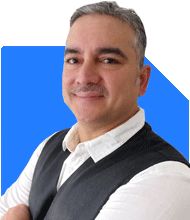Should I Invest in Mid-Cap Stocks Now?
Ramalingam Kalirajan |10923 Answers |Ask -Follow
Mutual Funds, Financial Planning Expert - Answered on Aug 20, 2024
He has an MBA in finance from the University of Madras and is a certified financial planner.
He is the director and chief financial planner at Holistic Investment, a Chennai-based firm that offers financial planning and wealth management advice.... more

Is it right time to invest in mid cap because their net asset value is low in few years they can go high?
Understanding Mid-Cap Funds
Mid-cap funds invest in medium-sized companies. These companies are not as large as those in large-cap funds but have the potential for significant growth. They can offer high returns, but they also come with higher risks compared to large-cap funds.
Evaluating Market Conditions
The performance of mid-cap funds is closely linked to market cycles. In bull markets, mid-cap stocks often outperform large-cap stocks. In bear markets, they can be more volatile. Currently, if the net asset value (NAV) of mid-cap funds is low, it could indicate a market downturn or a correction phase.
Long-Term Investment Potential
Mid-cap funds have the potential to grow significantly over time. When their NAV is low, it may present a buying opportunity. However, it’s essential to approach this with caution. Just because the NAV is low now doesn’t guarantee it will rise in the short term.
The Importance of Staying Invested
Timing the market is difficult, even for seasoned investors. Rather than focusing on whether it’s the right time, it’s more important to stay invested over the long term. Mid-cap funds typically perform well over a longer period, such as 5 to 10 years or more.
Diversification as a Strategy
Investing in mid-cap funds should be part of a diversified portfolio. Don’t put all your investments into mid-cap funds alone. Balance your portfolio with large-cap, small-cap, and flexi-cap funds as well. This helps manage risk while still allowing you to capture the growth potential of mid-cap stocks.
Why Not Focus Solely on NAV?
While a low NAV might seem attractive, it’s not the only factor to consider. NAV reflects the current market value of the fund's assets. It does not indicate the future potential of the fund. Instead of focusing solely on NAV, consider the fund’s past performance, the management team, and the overall market conditions.
The Role of a Certified Financial Planner
A Certified Financial Planner (CFP) can help you make informed decisions about investing in mid-cap funds. They can provide personalized advice based on your financial goals, risk tolerance, and investment horizon. Investing through a CFP also gives you access to regular monitoring and adjustments to your portfolio as market conditions change.
Final Insights
Investing in mid-cap funds can be a good strategy, especially when the NAV is low. However, this should not be the only factor guiding your investment decisions. A well-diversified portfolio, a long-term perspective, and the guidance of a Certified Financial Planner are essential for successful investing.
Stay committed to your financial goals, and remember that investing is a marathon, not a sprint. With the right approach, mid-cap funds can be a valuable part of your investment strategy.
Best Regards,
K. Ramalingam, MBA, CFP,
Chief Financial Planner,
www.holisticinvestment.in
You may like to see similar questions and answers below
Advait Arora | Answer |Ask -Follow
Financial Planner - Answered on May 05, 2023
Advait Arora | Answer |Ask -Follow
Financial Planner - Answered on May 09, 2023
Ramalingam Kalirajan |10923 Answers |Ask -Follow
Mutual Funds, Financial Planning Expert - Answered on Aug 02, 2024
Ramalingam Kalirajan |10923 Answers |Ask -Follow
Mutual Funds, Financial Planning Expert - Answered on Dec 22, 2025
Ramalingam Kalirajan |10923 Answers |Ask -Follow
Mutual Funds, Financial Planning Expert - Answered on Dec 22, 2025
Ramalingam Kalirajan |10923 Answers |Ask -Follow
Mutual Funds, Financial Planning Expert - Answered on Dec 22, 2025
Ramalingam Kalirajan |10923 Answers |Ask -Follow
Mutual Funds, Financial Planning Expert - Answered on Dec 22, 2025
Ramalingam Kalirajan |10923 Answers |Ask -Follow
Mutual Funds, Financial Planning Expert - Answered on Dec 22, 2025
Ramalingam Kalirajan |10923 Answers |Ask -Follow
Mutual Funds, Financial Planning Expert - Answered on Dec 22, 2025
Ramalingam Kalirajan |10923 Answers |Ask -Follow
Mutual Funds, Financial Planning Expert - Answered on Dec 22, 2025
Ramalingam Kalirajan |10923 Answers |Ask -Follow
Mutual Funds, Financial Planning Expert - Answered on Dec 22, 2025
Ramalingam Kalirajan |10923 Answers |Ask -Follow
Mutual Funds, Financial Planning Expert - Answered on Dec 22, 2025
Ramalingam Kalirajan |10923 Answers |Ask -Follow
Mutual Funds, Financial Planning Expert - Answered on Dec 22, 2025




















